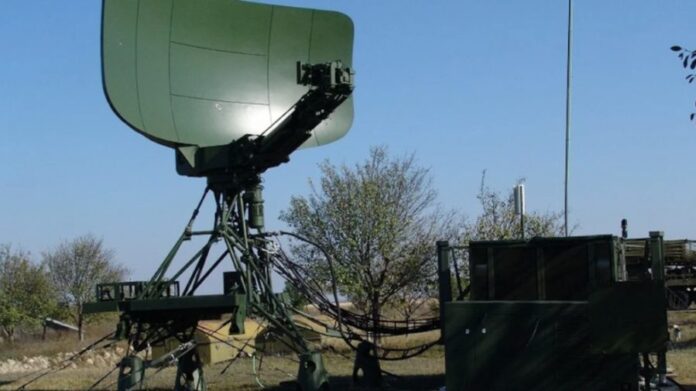The first high-performance military radar purchased by the Republic of Moldova in 2022 is now fully operational. Minister of Defense Anatolie Nosatii confirmed that, although the new system significantly enhances airspace surveillance, a single modern radar is insufficient to ensure full coverage. The other 20 radars in the National Army’s inventory date back to the Soviet era and are technologically obsolete. To address this gap, Moldova will receive a second modern military radar in early 2026, capable of detecting drones and other aerial targets. The upgrade comes amid repeated violations of Moldovan airspace, including the most recent incident on the night of 19 November 2025, when a Russian drone illegally entered the country’s airspace, prompting a sharp reaction from authorities.
The National Army continues to strengthen its operational capacity through partnerships with EU and NATO member states that provide radar-operation training. In October–November 2025, Moldovan forces participated in at least two exercises — JCET and Shield of Peace — aimed at preparing units for evaluation under the Operational Capabilities Concept (OCC). Meeting OCC standards is a requirement for participation in UN peacekeeping missions such as KFOR in Kosovo and UNIFIL in Lebanon.
In a statement to Realitatea.md, the Ministry of Defense explained that its arsenal includes both Soviet-era systems and modern, state-of-the-art radars that support early warning for law enforcement agencies, civil aviation, and the population. Minister Nosatîi emphasized the need to expand these capabilities: “It is a state-of-the-art radar, ready for use. Our personnel are trained to operate it, but we need more such systems to ensure constant monitoring at different altitudes. Drones have become a frequent threat, and we must be able to detect them effectively.”
On 19 November 2025, a new Russian drone once again violated Moldova’s airspace, crossing the country between 03:22 and 03:35. The drone entered from the direction of Lesnaia, Ukraine, and flew toward Sati, in the Stefan Voda district. According to the Ministry of Defense, the aircraft could not be detected by existing monitoring systems because it was flying at a very low altitude of approximately 100 meters.
The incident triggered immediate reactions in Chisinau. Igor Grosu, President of the Parliament, publicly condemned the aggression and reaffirmed Moldova’s solidarity with the Ukrainian people. In parallel, the Russian Ambassador to Moldova, Oleg Ozerov, was summoned to the Ministry of Foreign Affairs, where Moldovan officials formally will present the government’s protest.
Cooperation with NATO – essential
During the Moldova Security Forum the day before, Vice Prime Minister and Minister of Foreign Affairs Mihai Popsoi questioned the value of neutrality and raised the need for a democratic discussion with society about it. “We must hold a broader discussion to examine all aspects, including the fear that Russian propaganda creates by portraying NATO as the ultimate evil. This discussion must unfold in a democratic environment, because we cannot use the same mechanisms and tools as the Kremlin. We are better than they are. And after this discussion, things may change. I have a clear vision of what I believe is right for my country, and I noted that my first job after college was within an important military alliance (NATO). But I represent the population of the Republic of Moldova and must consider their sovereign will. For now, society chooses neutrality,” the official stated.
During the same forum, at a different discussion panel, the Minister of Defense stated that the Republic of Moldova intends not only to remain a consumer of security but also to become a regional provider of stability. “In response to new security challenges, we have updated all policy documents: the National Security Strategy, the National Defense Strategy, and the Military Strategy. (…) We can manage all crises together with our security forces, and I want to highlight the key lesson we have learned — the exceptional cooperation among our institutions at all levels. I also want to thank our partners for their support in accelerating this process, including the extensive assistance from the EU, NATO, and our bilateral partners, which helps us achieve our interoperability and modernization goals.”
It’s worth mentioning that Minister Anatolie Nosatii has promised that the second radar is currently being manufactured. The project and procurement agreement have been signed, and with the help of partners, it will be delivered in 2026, so that it will be operational in the first quarter.



